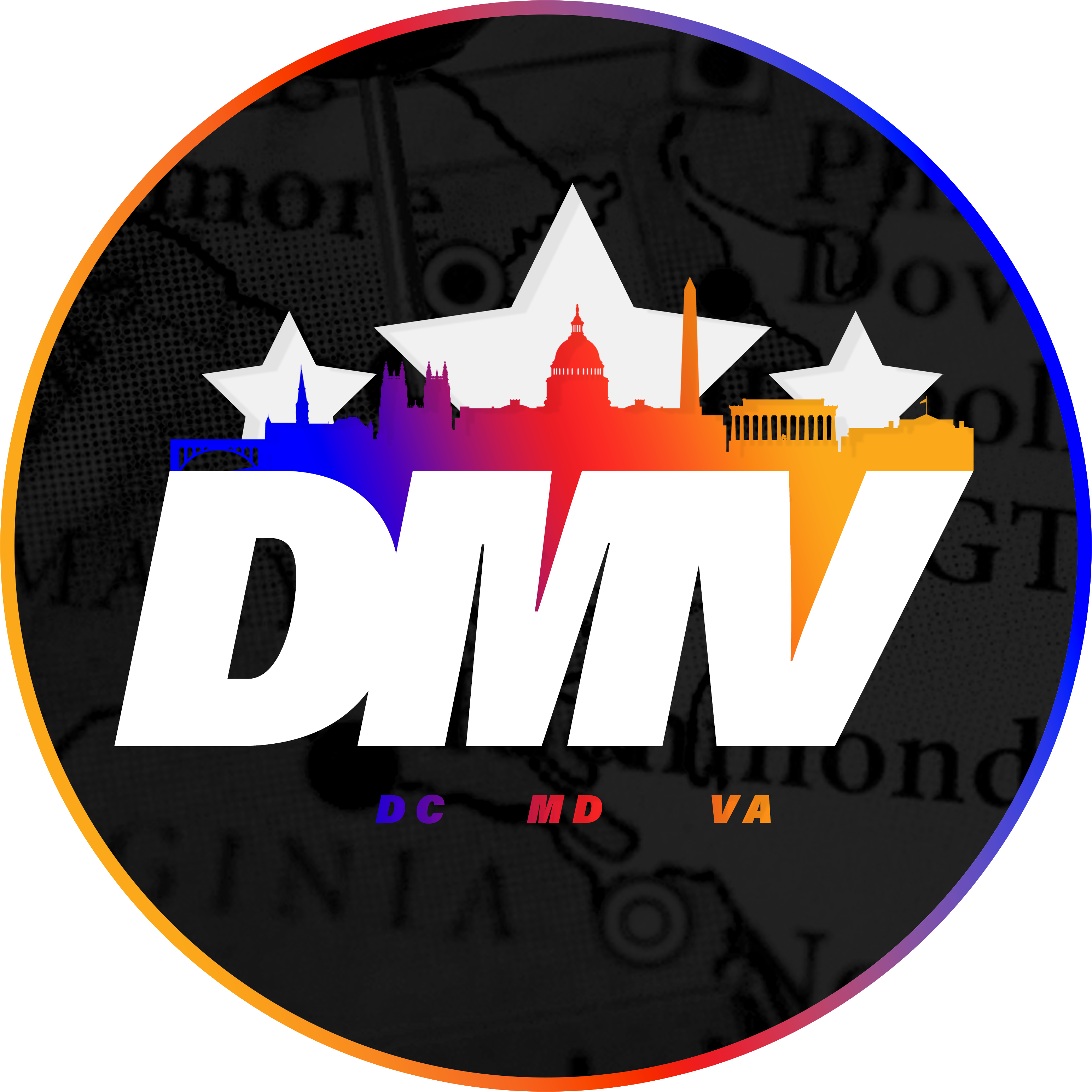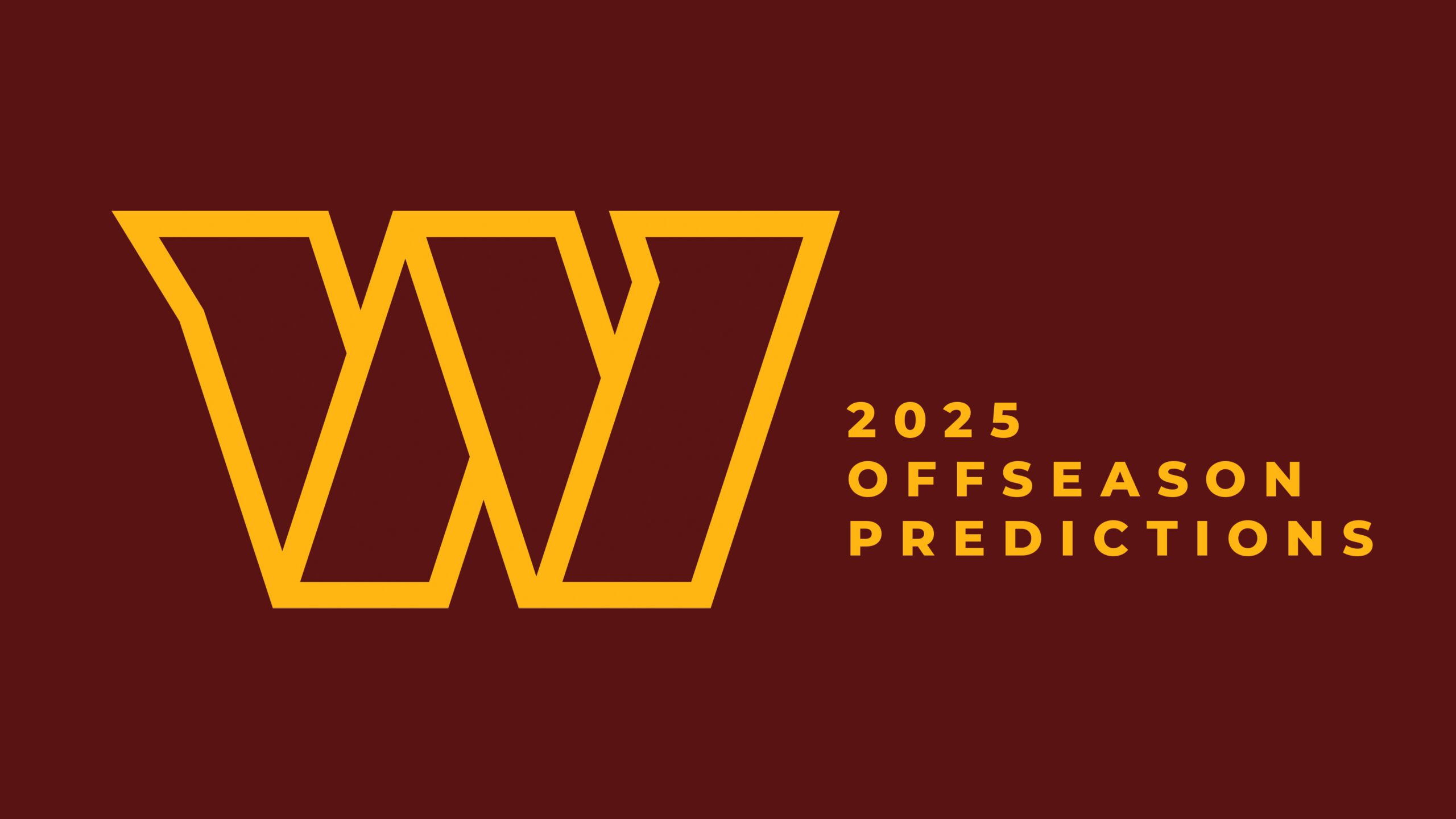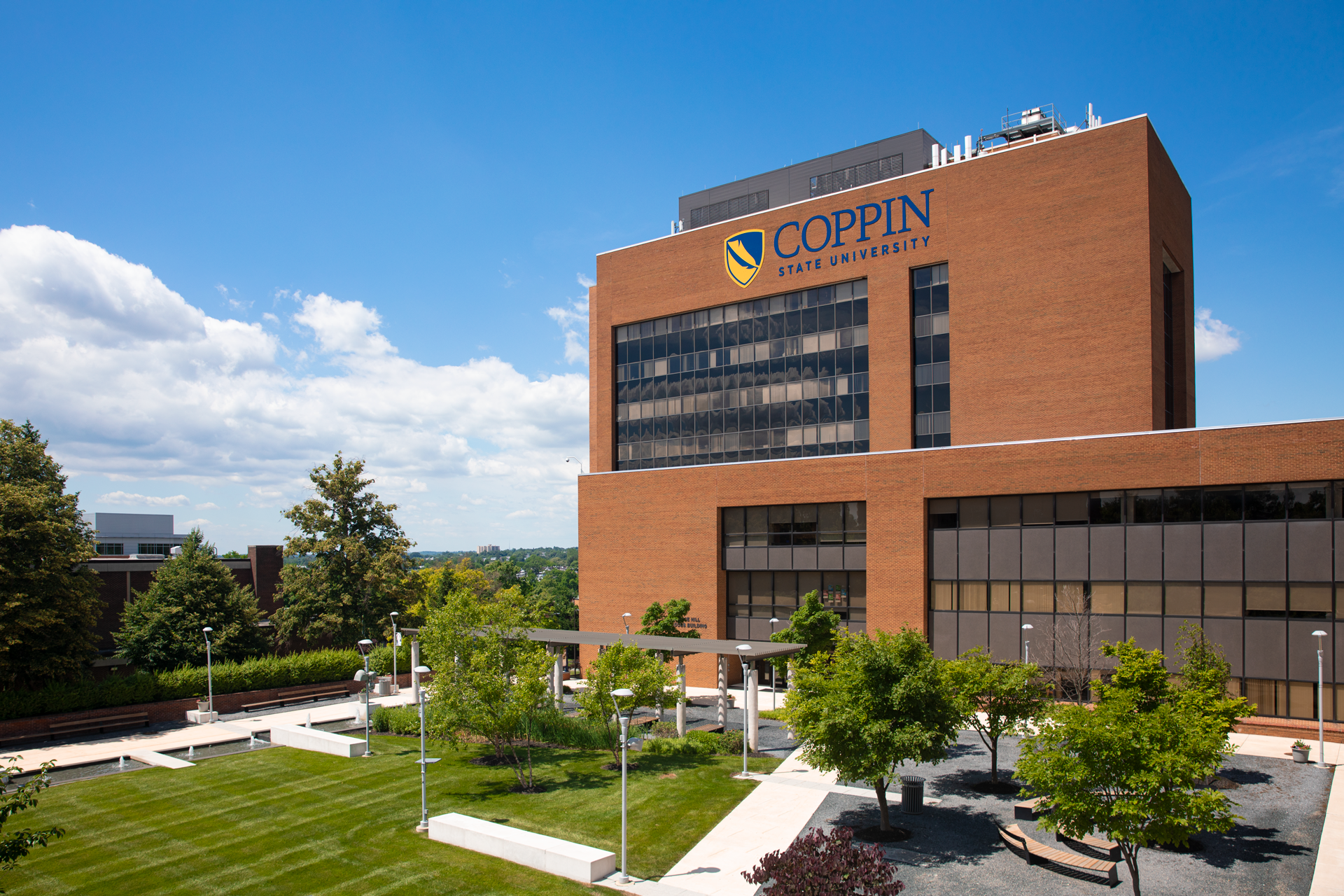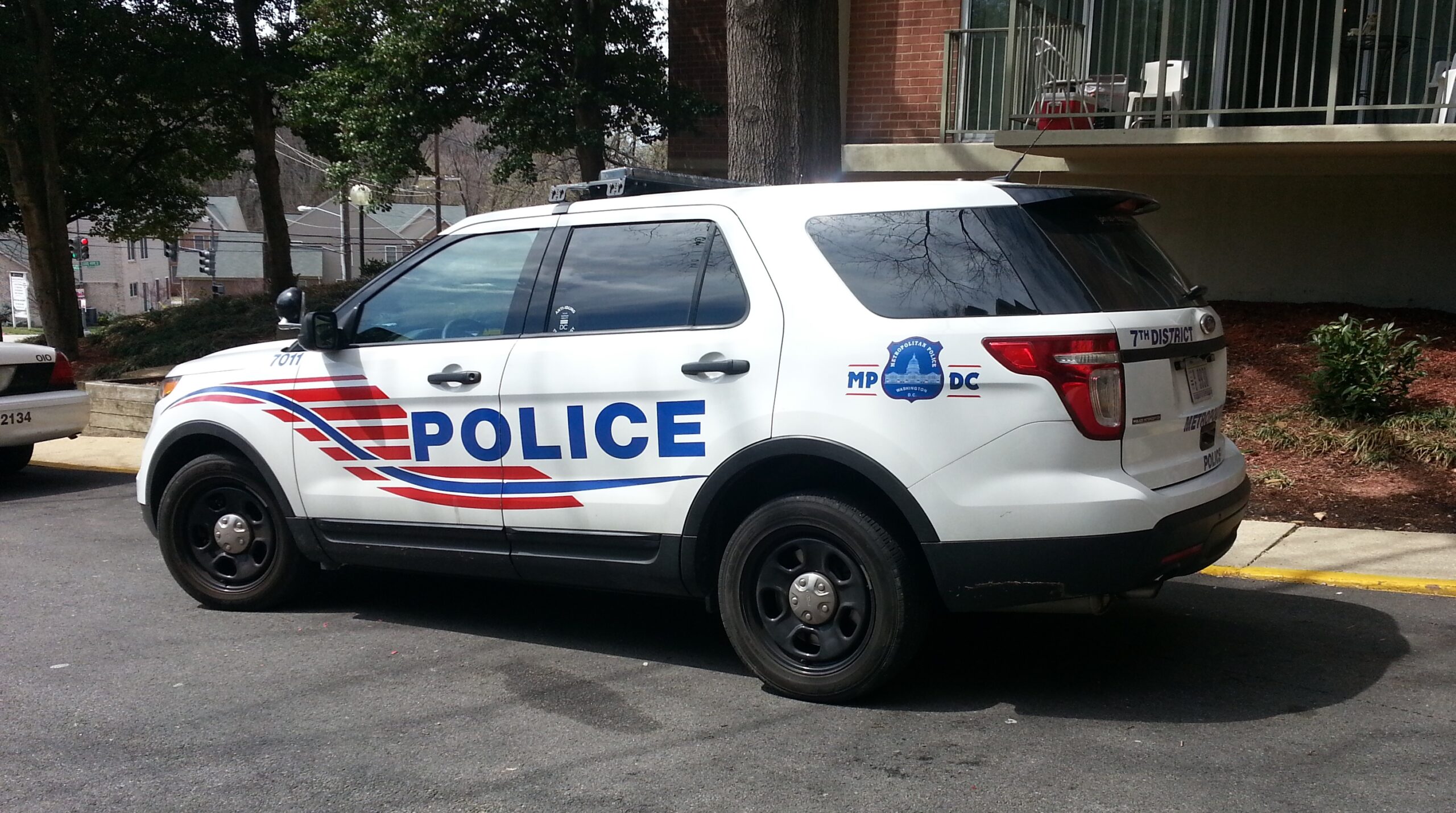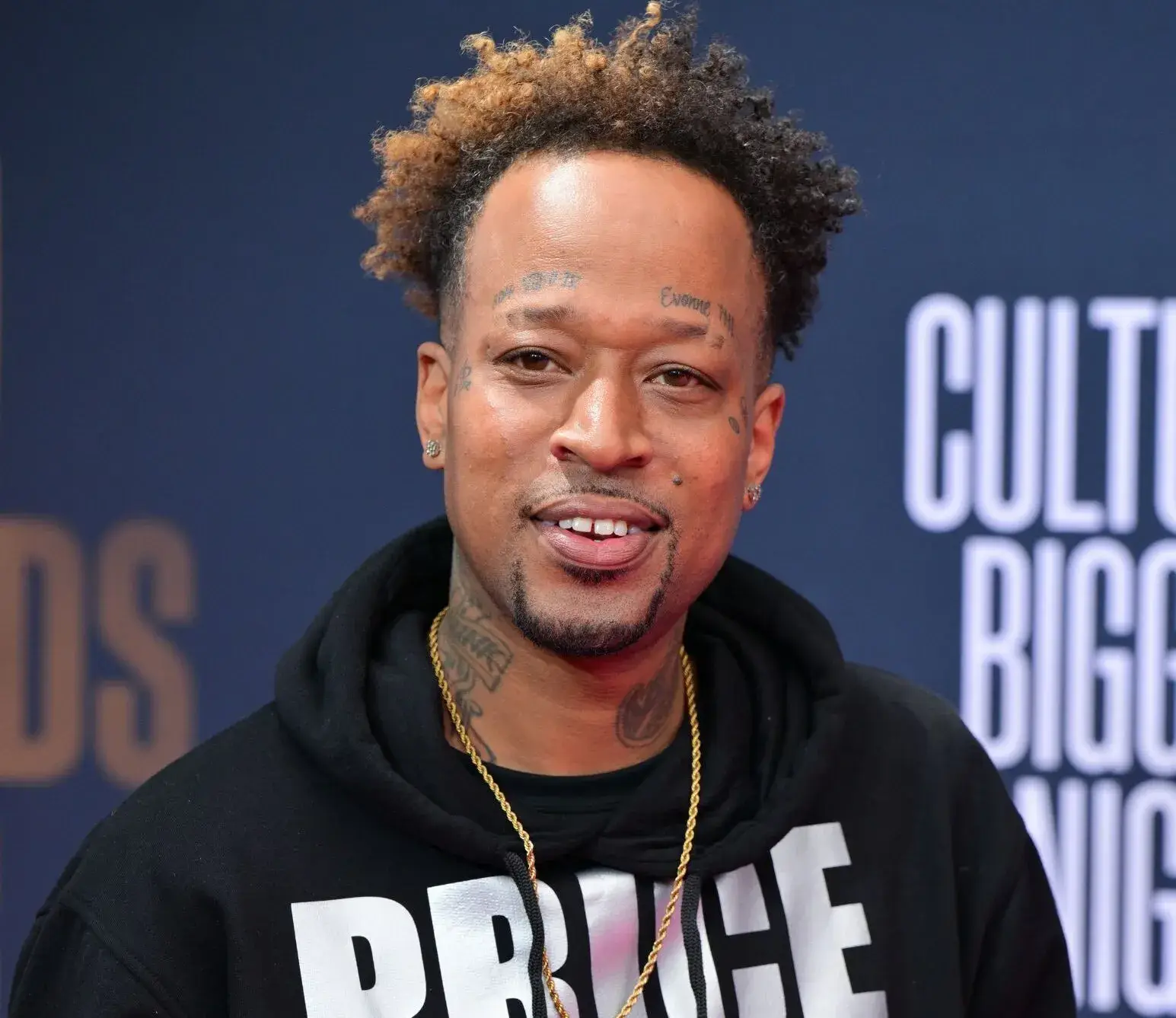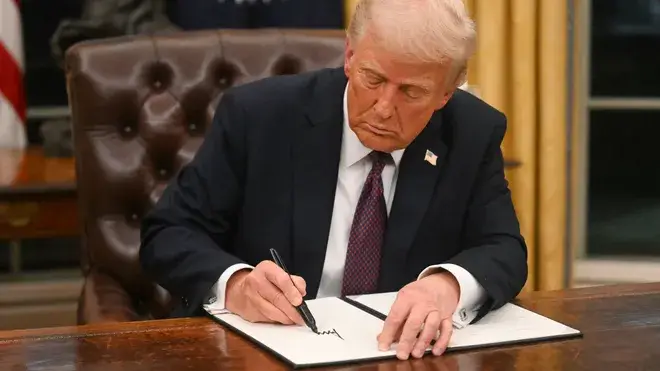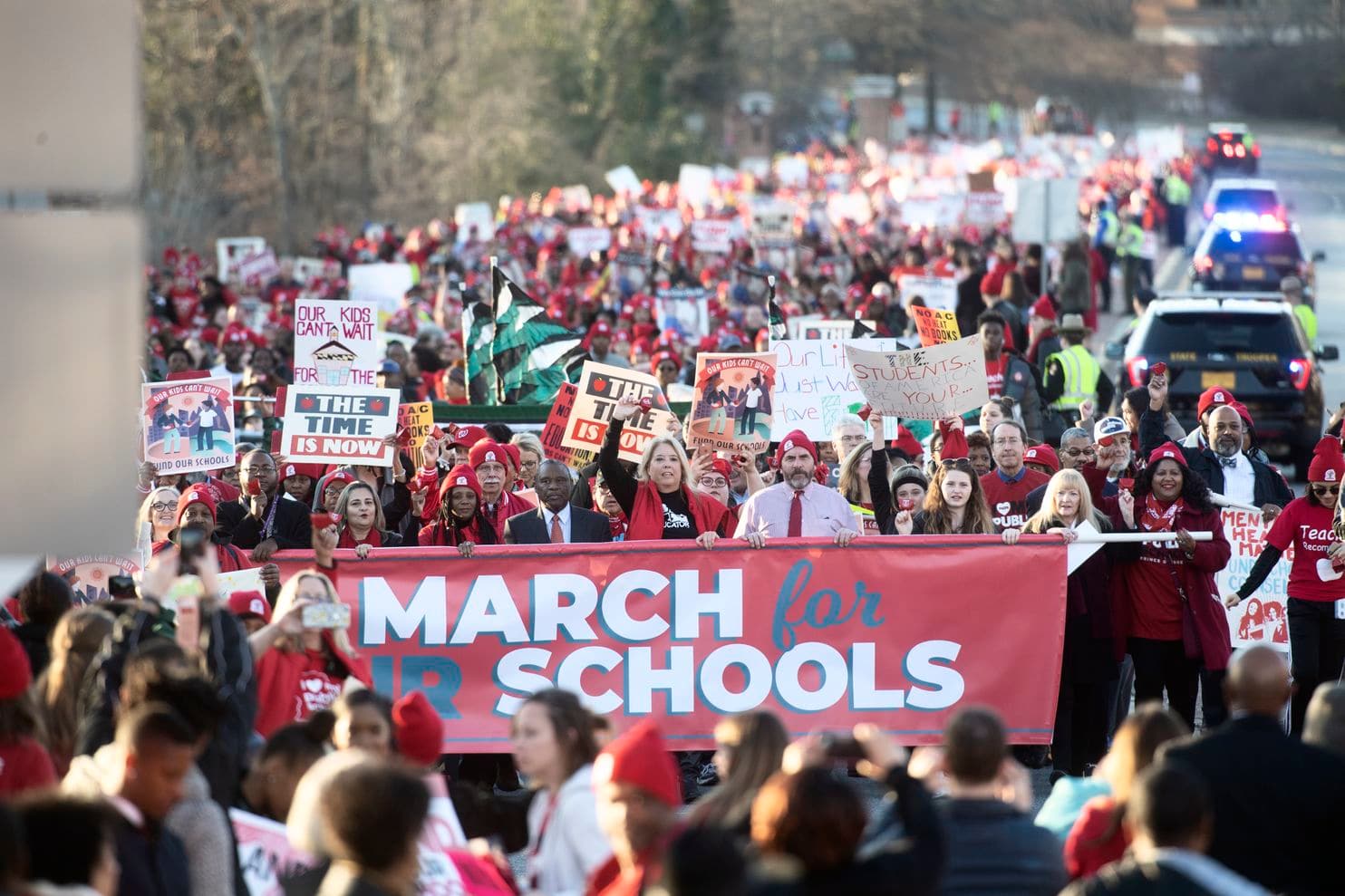
Teachers And Their Boosters Rally For Increased Education Funding In Maryland
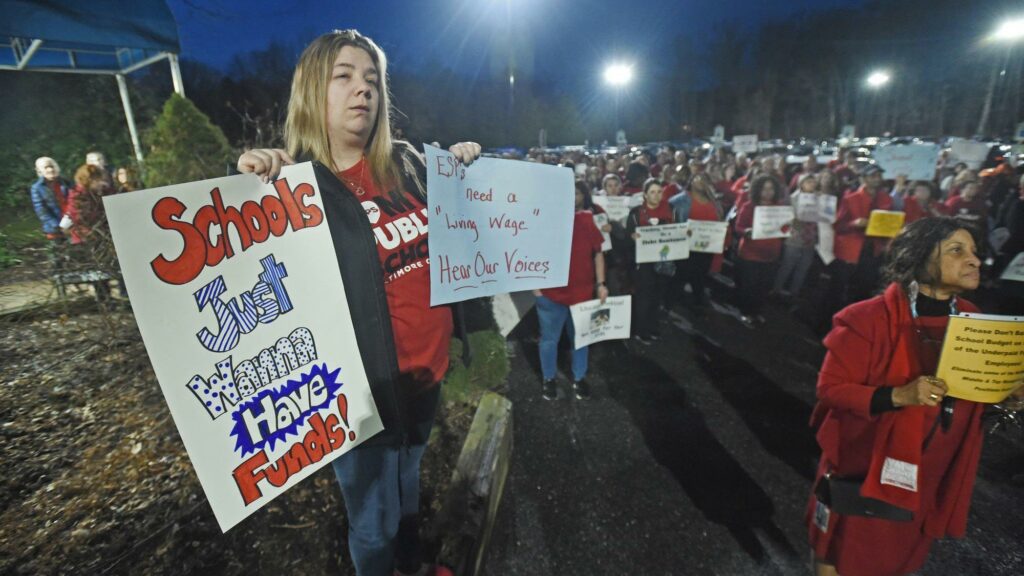
Several thousand teachers, parents and students flooded Maryland’s capital Monday night, shutting down roads to rally for a dramatic increase in school funding over the next decade.
More than 170 school buses brought education advocates, clad in red T-shirts, to pressure lawmakers to commit billions more to public schools. The long-planned “March for Our Schools” rally took place even after top Democrats promised last week to pump $1 billion into public schools over the next two years.
While similar rallies in other states have been tied to teacher strikes in recent years, Maryland’s teachers say the strategy here is a political full-court press to improve schools they say have been chronically underfunded by as much as $2.9 billion per year.
“It looks different in every state, but the message is the same: more money for public schools,” said Cheryl Bost, president of the Maryland State Education Association.

Demonstrators rang cowbells and carried signs that read “Raise my taxes” and “Our kids can’t wait.” Among those marching was Marti Wensel, a Spanish teacher from Glenwood Middle School in affluent Howard County, who said she is teaching classes of 30 students in an overflow trailer and gets neither the salary nor the classroom funding her job requires.
“We cannot give them what they need,” she said of her students.
Lawmakers in Annapolis are weighing the largest overhaul of school funding in nearly two decades to fund proposals that would expand prekindergarten, give teachers a 10 percent raise, enhance grants in the state’s poorest areas and place tougher standards on teachers, among other things.
The policy rewrite — which many say is unprecedented in the state — is based on recommendations from the Kirwan Commission, led by former University of Maryland System president William E. “Brit” Kirwan, which spent more than two years reviewing shortcomings in Maryland public schools and comparing the state with the best education systems in the world.
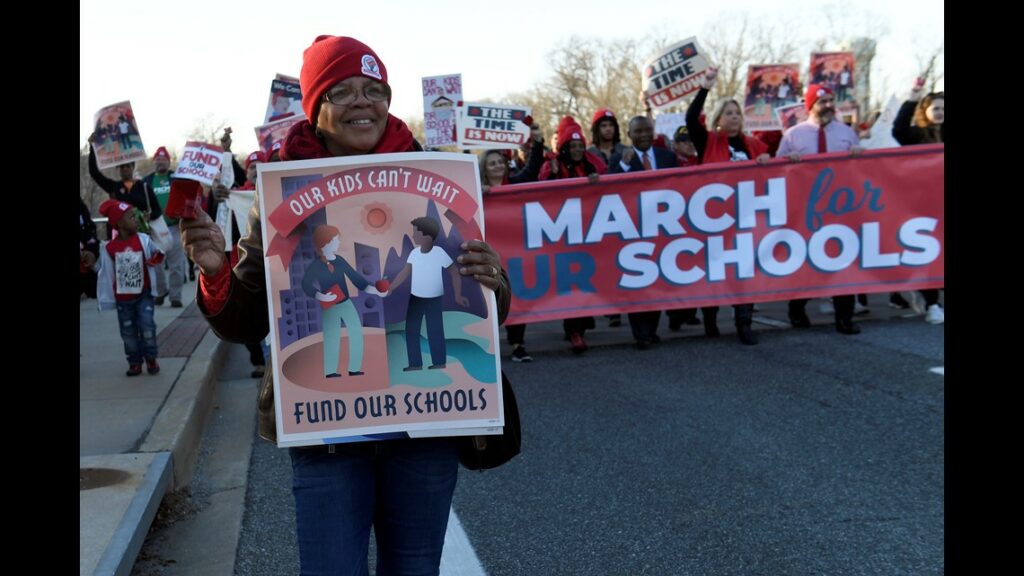
The commission found that fewer than 40 percent of Maryland high school graduates can read at a 10th-grade level and pass a standardized Algebra 1 exam, benchmarks that suggest many are not ready for college.
Last week, the American Civil Liberties Union revived a decades-old class-action lawsuit alleging that state leaders — and funding disparities they approved — unconstitutionally deprive Baltimore City students of an equal education. The threat of that lawsuit in 2002 prompted the state’s last overhaul of education funding.
Meanwhile, Senate President Thomas V. Mike Miller Jr. (D-Calvert) and House Speaker Michael E. Busch (D-Anne Arundel) introduced legislation to allocate $325 million next fiscal year for 10 Kirwan initiatives. The legislation would provide $725 million the following year.
Educators’ decision to rally anyway provoked the ire of Miller, who has made education funding a top priority of the Democratic caucus.
“We do not respond well to threats,” Miller warned from the Senate rostrum last week. He said the General Assembly is moving as quickly as it can to provide funds to implement some of the Kirwan recommendations, noting that “we just got the report last week.”
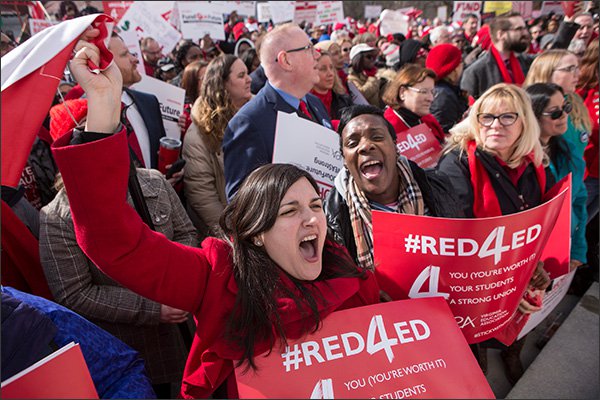
The recommendations also require local school boards to help foot the bill, and Miller said, “We haven’t gotten the counties to buy into it yet. . . . These foolish litigators can proceed with what they are going to do, but we’re going to move on our own good speed and fully fund education as best as we possibly can.”
Other Democratic lawmakers welcomed the rally. House Appropriations Committee Chairwoman Maggie McIntosh (D-Baltimore City) took the stage with two dozen other state lawmakers and promised she would demand more money for schools every year.
“We won’t stop,” McIntosh said. “We are not going to stop until we say this in Maryland: The achievement gap for black and white students is erased.”
Where the money will come from after fiscal 2021 remains a question. The Kirwan recommendations are expected to cost $3.8 billion a year when fully implemented a decade from now.

Alvin Thornton, a longtime education advocate who led the state’s 2002 rewrite of education funding, suggested that policymakers pass a broad tax increase on corporations and citizens to pay for the new policies.
“We should ask those who can afford to do more to do more,” Thornton said before Monday’s rally.
U.S. Sen. Chris Van Hollen (D-Md.) and several Democratic county executives from around the state were expected to address the crowd Monday night.
Gov. Larry Hogan (R) has offered conditional support for increasing education funding, saying any extra tax dollars must be tied to school accountability measures. Hogan has introduced several proposals to increase state oversight on local school spending, but they have not been embraced by Democrats.
Source: The Washington Post via Erin Cox
